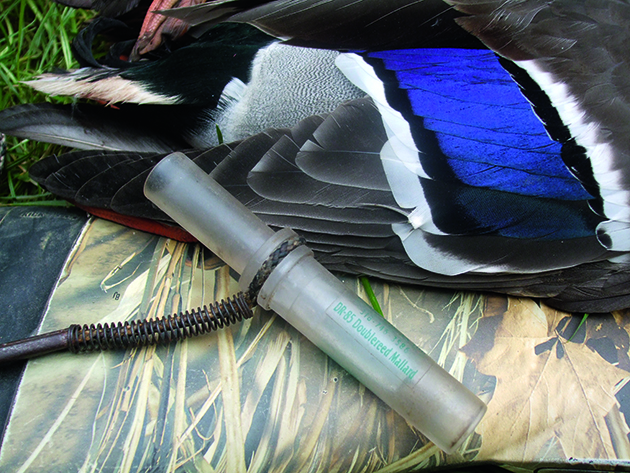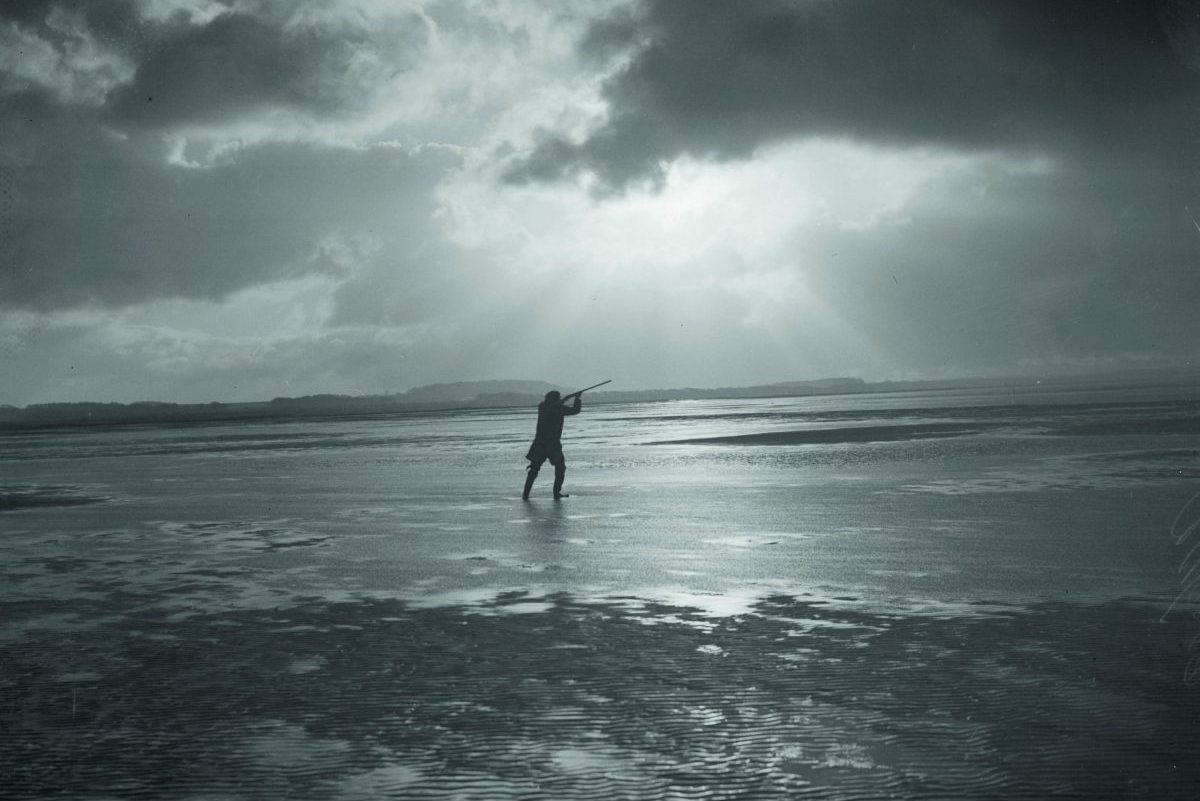The skill of the wildfowling caller
Bill Winster explains why it’s well worth learning to call to lure mallard and wigeon to the gun

With the help of the caller and fieldcraft, the morning flight produced a special bag
The sun had just started to rise, splashing orange hues on to the solid iron framework of the railway viaduct shadowed in the distance. A jay looped its way over the estuary, seemingly mocking the world as it flew noisily towards the marsh gutter in which I was crouched. It was vermin, and an intrepid songbird, egg and fledgling thief in the spring, yet admirable in its own way with its powder-pink hues and electric-blue wing flashes.
I thumbed the safety catch forward in anticipation but little did I know that another “marsh hunter” was also watching the jay. On rigid wings and with the sound of rushing air, a young peregrine was descending out of its stoop to strike. The jay took evasive action and hit the maritime grass in an untidy heap, protesting loudly at its early-morning wake-up call. It was a missed strike, but what an incredible sight to behold at such close quarters.
The peregrine alighted casually on the limestone rock face behind me, seemingly unperturbed by its exertions. The jay cowered motionless for several minutes before apprehensively making for the estuary and wood whence it came. Its future destiny obviously lay elsewhere, at another time and in another place.
While I was marvelling at such a spectacular sight, a high-pitched “Wheeooo” — the call that resting cock wigeon make on the water — abruptly claimed my attention. An early-season cock wigeon was approaching from somewhere to my left, but where on earth was it? I rapidly picked out a singleton skimming the brown tidal scum line, its snow-white shoulder bars reflecting brilliantly against the sunrise. With my eyes fixed on the bird, my fingers were simultaneously scrabbling down the lanyard for the old faithful brass call. My long, single, contented “Whee-oos” welcomed the bird just as it crossed in front. It turned straight at me, craning its neck so it could see where the sound was coming from.
Eager spaniel
I took a 25-yard “dolly” of a shot, at a hanging target. Bang! A complacent miss resulted. The wigeon jinked sideways but was instantly folded on to the exposed mudflats by the more reactive and instinctive second shot. My eager spaniel was already bounding out to make the retrieve. His marsh manners have never been perfect, but he always gets the job done. With the bird to hand, he then collected the two empty cartridge cases that the auto had flung out. Like his master, he enjoys the aroma of burnt powder. It’s a useful trait that he’s acquired for mopping up the empties after
an evening flight.
Mallard are lazy and tend to flight much later than the wigeon on our estuary, and today they followed the familiar pattern. With tell-tale chattering, a good bunch of 20 or so had lifted from their nightly dabblings on the stubble field flashes over the seawall. Most had flighted further along the brack edge 1,000 yards away, but a singleton had broken rank and followed the same path as the earlier wigeon.
A familiar voice behind you
You can often sense from its body language whether a bird is likely to respond to a duck call. I often wait until they have “gone past” before hailing them back. This was one of those opportunities.
Think about it. All your mates have gone one way and you are suddenly on your own. If you hear a familiar voice behind you, there’s every chance you will turn back. Can one balance human logic with wildfowl psyche? I’ve often wondered about such bizarre things when sitting in the solitude of a winter’s dawn.
I kicked out a pleading come-back note on the mallard call. The drake made his fateful turn and within minutes he was lying prone on a turf of puccinellia, with several dust-grey feathers turning over violently in the breeze, seemingly racing each other across the green marsh. He, too, had fallen to the second shot.
Calling is a skill we should all learn and practise. Possessing this skill can so often make the difference between a blank flight and having a bird or two in the bottom of your canvas bag.
Almost before the echo of the shot had faded, another drake mallard was homing in on me from the opposite direction. This one knew exactly where he was going — the call had no effect, so I stopped hailing immediately and waited. He would cross from right to left at roughly 35 yards. Distances can be deceptive on the featureless inter-tidal zone, and ranges are learned with experience.
The first shot didn’t compensate for his sheer speed and he flared upwards and back on the wind. The quick second shot was on target, but he spiralled towards the swiftly ebbing tide with a wing down in a controlled parabolic descent.
The third shot delivered the coup de grâce and made sure the retrieve would be a simple one for the dog. I always try to make sure that a visibly wounded bird is dead, even if it means firing another “finishing” shot at it. A true wildfowler has the utmost respect for his quarry.
A diving bird can be awkward for a dog in a strong current, and a prolonged period of swimming in cold water can sap its strength over time. Two fine drake mallard and a cock wigeon now lay behind me — a bag to make any morning flight special. Time ticked slowly onwards, a whole hour in fact, during which time I’d been captivated by two pure-white little egrets hunting the tide pools for fish fry. How adept they were at their profession — another bonafide hunter with an abundance of patience, stealth and lightning reactions, so similar to theperegrine.
It was a flicker of movement and the simultaneous rush of a pair of bladed wings that snapped me back into fowling action, as a pintail hurtled past on the wind. It was a reflex that lifted the muzzle swiftly past its outstretched slender neck, my trigger finger squeezing instinctively to send the bird crashing, lifeless, into the outflowing tide in a plume of spray.
Of all a wildfowlers’ quarry, this species is the wariest and the most elusive. But this one had been brought to the bag by a fowler’s ieldcraft: do your reconnaissance, keep down in your gutter, keep your face covered and, above all, keep still.
Bill’s best tips for a wildfowling caller
- Never over-call and know when to stop.
- Hunt the tideline with your dog if a bird is wounded and lost over the water. A bird will nearly always try to make its way back on to land.
- It’s often worth waiting for the duck to fly over before hailing them back.
- Fire a finishing shot to make sure a wounded bird is dead.











